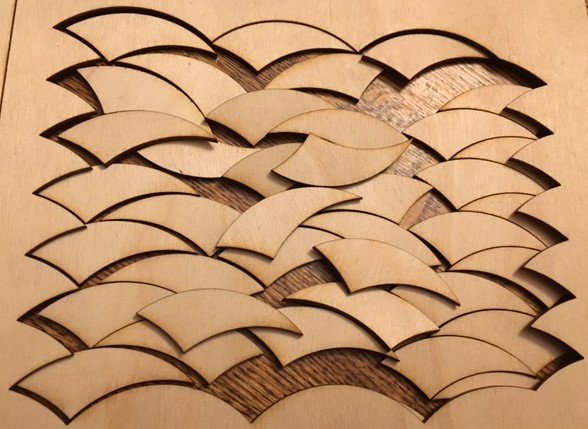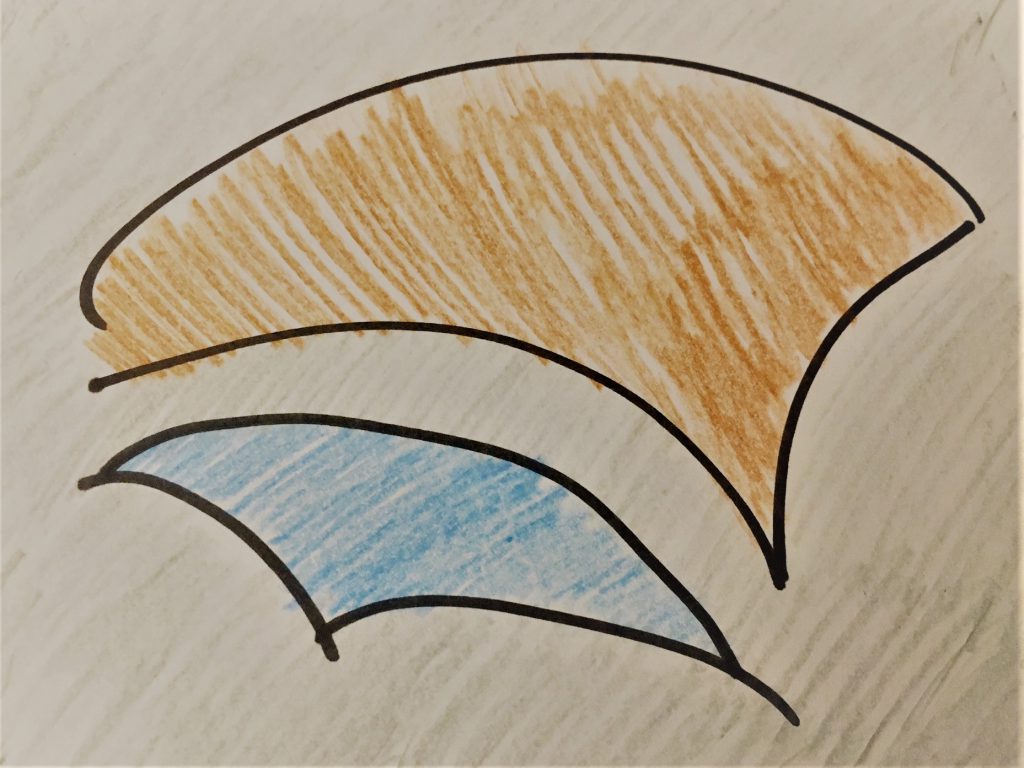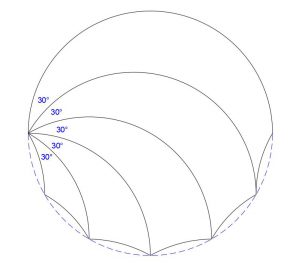Tim Lexen has written a series of posts on the topic of Tricurves: Bending the Law of Sines, Combining Tricurves and Phantom Tiling. In this latest post, Tim has been working with our own Katie Steckles to turn Tricurves into real objects to play with.

When you discover an interesting mathematical shape or object, there’s a strong instinct to play with it – maybe by drawing sketches and doodles to test the limits of the idea. But in the case of Tricurves, drawing an accurate shape takes a little time, and it doesn’t lend itself well to idle experimentation.
Producing a physical version of a shape, in enough quantity to allow for experimentation, makes it much more tangible. In our own respective locations, we’ve each made use of laser cutting facilities to produce wooden Tricurve tiles to play with, and we encourage you to join in.


